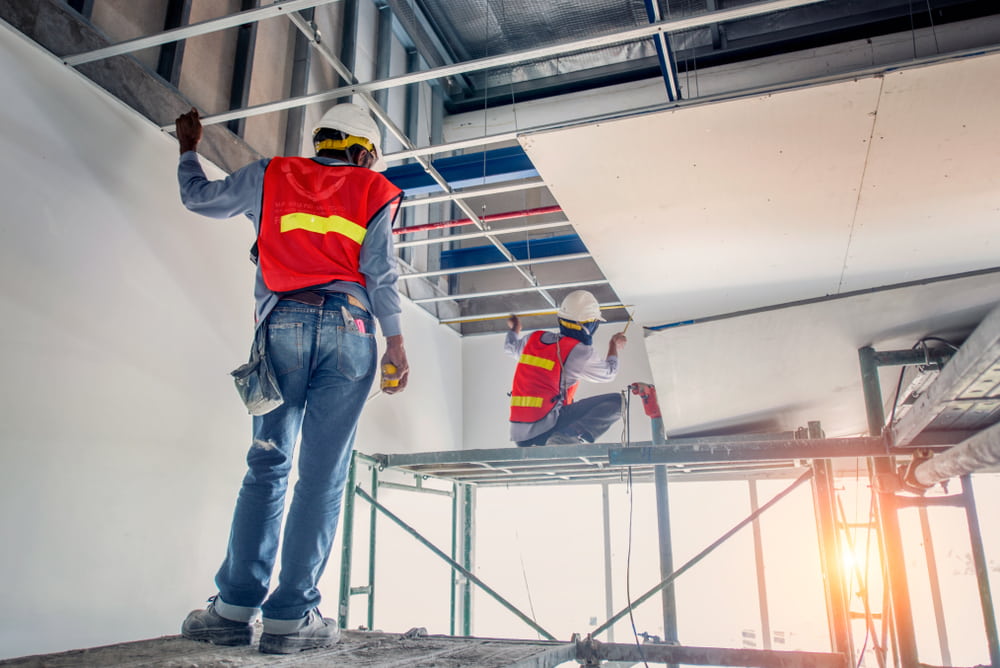
Also known as plasterboard, gypsum board, custard board, buster board, wallboard, gypsum panel, or sheetrock, drywall is one of the most popular walling materials in America today. Its advantages include low cost, wide availability, and relative ease of installation compared to many other materials.
That being said, plasterboard installation is still a complex job that should be performed by an established Fort Collins drywall repair company. One of the reasons for this is that drywall comes in many different types, and knowing when and where to use each type is necessary to avoid mistakes during installation and maximize value.
We have previously provided some tips on how to decide whether to replace or repair your drywall and what to look for when hiring a drywall contractor. Now we’ll expand on this topic by listing 5 common types of drywall and their uses. Keep reading to learn more.
How do I know if I need to replace drywall?
Drywall is an inexpensive and effective indoor walling solution. However, it’s also susceptible to water damage and vulnerable to impact breakage, some of which can damage your drywall to the point where it can no longer be fixed.
You should replace a sheet of drywall if it has suffered:
- Large holes that are too big to be covered up or affect the structural integrity of your wall.
- Extensive water damage can cause visible bulging, crumbling, and collapsing of the drywall.
- Cracks signify an underlying structural problem that needs to be addressed to preserve the integrity of the drywall.
- Splintering along the joins and edges is a sign of significant damage, typically caused by rot, water damage, settling, or materials that are at the end of their service life.
- Bulges and bumps are caused by water damage or excess humidity. Since reworking is usually ineffective in these cases, replacement is the go-to option.
What are the types of drywall?
In residential applications, drywall is typically used on the ceilings and walls. However, it comes in many different types, sizes, and thicknesses that have different use cases.
Here are 5 commonly used types of drywall:
- Regular drywall or white board is usually brown on one side and white on the other. It’s economical and ranges in thickness from ⅜ inches to an inch. This is the most commonly used drywall type.
- Blue board drywall. Also called plaster baseboard, this type of drywall is used for veneer plastering due to having special absorption qualities on its surface paper.
- Purple drywall is like regular drywall, but it’s more resistant to mold and moisture. If your wall is going to be in contact with water, this is the best drywall type to use.
- Paperless drywall has a fiberglass covering that protects it from rot and provides increased resistance to mildew and mold. It’s also sturdier than regular plasterboard.
- Green board drywall has a green covering that gives it increased moisture resistance. It’s often used as a tile backer in areas such as basements, bathrooms, kitchens, laundries, and utility rooms.
Where can I hire a reputable Fort Collins drywall repair company?
Want to have your drywall installed by an experienced team that emphasizes quality, thoroughness, and safety at all stages of your project? Or perhaps your home near The Shops at Foothills is in need of reliable plumbing, electrical, or fence replacement work?
Whatever your home improvement, repair, or maintenance needs may be, you can count on Handyman Connection of Fort Collins to meet them with utmost efficiency and precision. Get in touch with us and benefit from our client-oriented approach and extensive experience today.